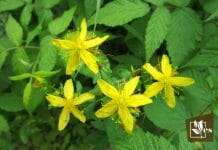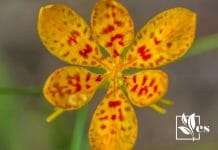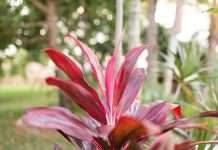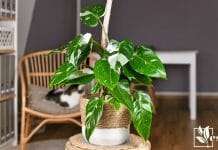Plants that repel rats are numerous – the list includes marigolds, peppermints and rosemary – and we are sure that you will find what you are looking for in this article.
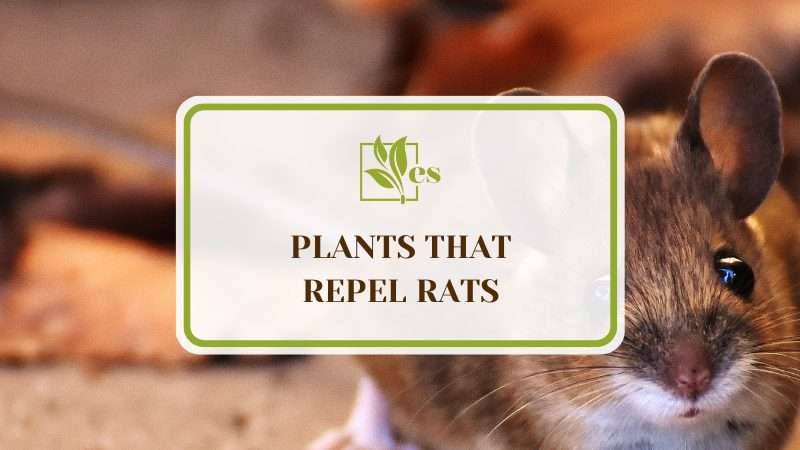
How to get rid of rats eating plants and which repelling plants are the easiest to plant?
Continue reading to know the answer to these and so much more. Also, you can read about plants that repel snakes and plants that repel beetles.
JUMP TO TOPIC
List of Plants That Repel Rats
1. Marigold
The plant is a herbaceous annual that belongs to the family of Asteraceae. It is native to Southern North America, more specifically, Mexico.
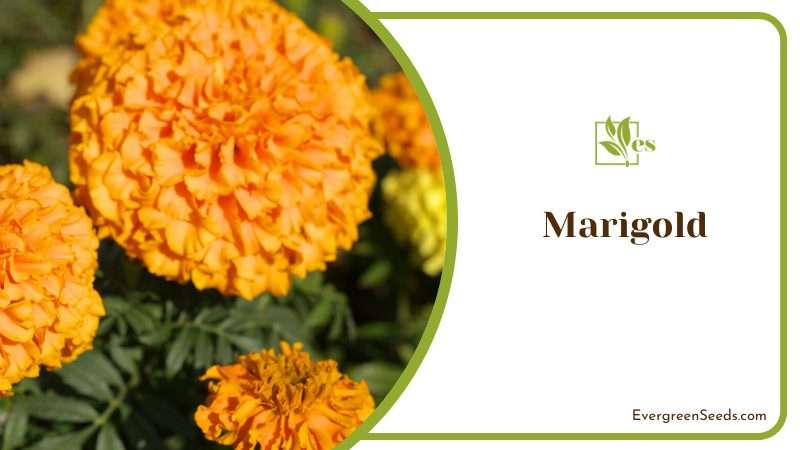
It is typically grown in nursery seedlings or from seeds in spring when the soil is workable. It has a fast growth rate that enables it to reach maturity within a few months when grown from seeds. The plant is not a tall plant so there is an option to keep it indoors. The height range of the plant lies between 4 to 48 inches and the width is between 6 to 24 inches.
The foliage of the plant is fern-like and since it is an annual, it completes its life cycle in a single growing season. The size and build of the flowers depend on the type. A few types have single, tiny petal flowers while some have 4-inch double-petaled flowers, but all have a daisy-like appearance.
– Benefits
Apart from repelling rats, the plant is a source of attraction for ladybugs, wasps, etc. These beneficial insects prey on all the harmful insects found around our gardens. The plant uses toxins to get rid of nematodes.
– Uses
Nobody likes having rats roaming around and that is where the plant’s blooms come into action. The rats absolutely dislike the musky scent, resembling that of black pepper, of the warm blooms. Plant it in sunny spots in your garden or indoors near your windows and watch the rats leave your space for good.
– Distinguishing Characteristics
The plant is a full-sun lover so it is best you plant it somewhere that receives the maximum amount of sunlight throughout the day. Filtered or partial sunlight causes problems like leggy or stunted growth, and the flowers do not bloom as much as they do with full sunlight.
It is not fussy when it comes to the selection of the type of soil. The plant remains happy as long as the soil is not too acidic. It is best if you keep the soil pH near neutral. Soil rich in organic matter does not make the plant happy, rather it prefers lean soil over rich soil any day.
Make sure to water the plant regularly after you plant them and do not let the soil remain dry for more than two days. Water it daily if your area experiences frequent droughts. However once the plant fully matures, it becomes tolerant and does not have many watering needs.
However, it blooms better with a few weekly watering sessions. You do not need to add supplemental fertilizer to it unless the soil is of extremely poor quality. The best gesture is to deadhead them regularly.
– Propagation
The best way to propagate the plant is through seeds. To have early blooms, sow your seeds indoors around six to eight weeks prior to the last frost date. The plant germinates quickly when the seeds are sown directly into the garden soil.
In fact, you might even need to propagate. The plant self-seeds which means that you will have plenty without having to make much of an effort.
2. Peppermint
The plant is a herbaceous perennial that belongs to the Lamiaceae family and is native to Europe. It is also casually called the red gum plant.
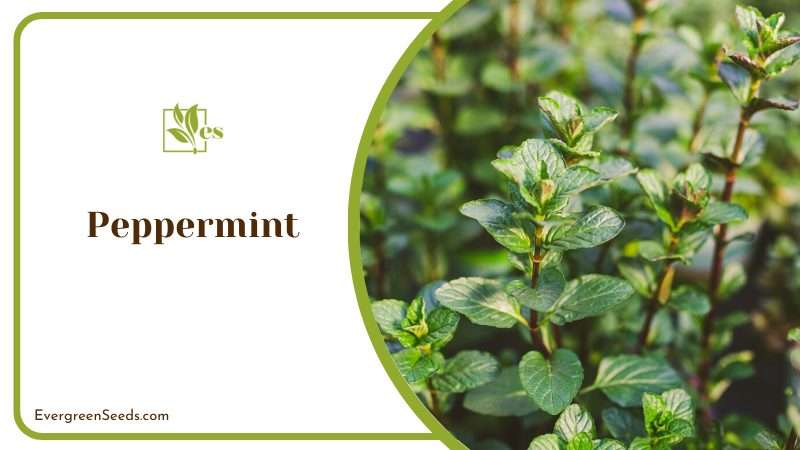
It is easy to care for whether grown in the garden or in containers and is very easy to grow. Because the plant spreads at a fast rate, most gardeners prefer growing it in containers. However, if you wish to grow them directly in your garden, consider installing soil barriers first.
The plant is 1 to 2 feet tall and the same wide. Its leaves are dark green, spear-shaped, their length is twice their width, have toothy edges, and pointed tips and the base joins the stalk which is often the same color as the stems, red.
– Benefits
Apart from being a great rat repellent, The plant treats digestive problems, sinus, headaches, and various other health conditions. In terms of gardening benefits, it attracts beneficial pollinators like butterflies and bees.
– Uses
The plant’s oil is what keeps the rats away. Rats do not tolerate the strong pungent smell of the plant. The plant’s oil is readily available in the market too.
– Distinguishing Characteristics
The plant is quite flexible when it comes to light requirements. It grows well in full sun and sometimes in partial shade and tolerates dappled shade unlike the rest of the herbs.
It grows in every kind of soil making it its best and worst feature. However, the best kind of soil for it is loamy, rich, and moist. It is found growing mostly around trail sides but it grows literally quite everywhere.
To keep your plant happy and thriving, keep the soil consistently moist. Watering the plant frequently also enhances the flavor of the leaves. Do not overwater it as it does not tolerate standing water. Too much water kills the roots and in worse cases, kills the plant as well.
Avoid adding any fertilizer to the soil as it suppresses the flavor of its leaves. The plant shows leggy growth instead of showing active growth when fertilized. It is because of the frequent use of fertilizers that you notice a visible difference in the taste of store-bought herbs and homegrown herbs.
– Propagation
The easiest way to propagate it is through cuttings. Use a clean pair of scissors to take a four to 6-inch long cutting just below the leaf node. Remove all the leaves on the stem and submerge the cutting in water and place it near a window that receives ample sunlight and air circulation.
The roots emerge within a few weeks but do let them develop a bit more before you transplant your cutting to a pot containing good quality potting mix. Trim of the first 2 inches to allow the roots to have the energy. It is a matter of a few more weeks before you will finally be able to transfer your cuttings to their new home.
3. Rosemary
It is a herb and a perennial evergreen shrub. It is also known as a compass plant, belongs to the Lamiaceae family and is native to the Mediterranean.
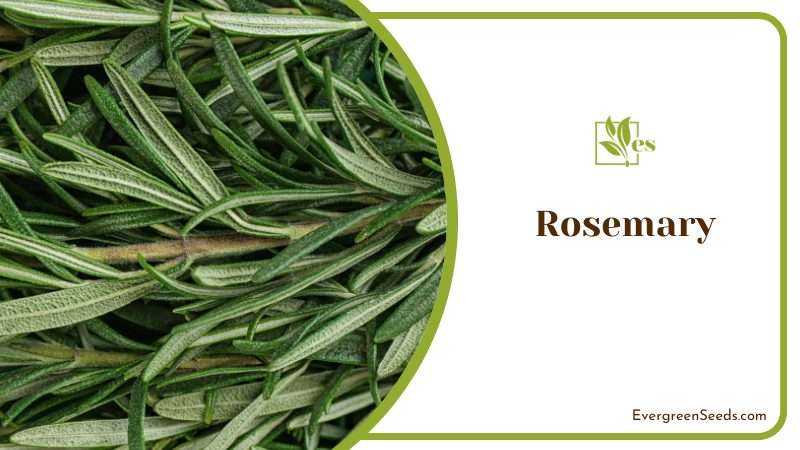
The plant shows active growth in spring and summer but is harvested all year round. Its leaves are the most aromatic before it blooms. It has a fast growth rate and grows up to 12 to 16 inches per summer. The plant has a height between 2 to 6 feet and is up to 2 to 4 feet wide.
Its stems are angular, and compactly covered with fern-like leaves with hair-like structures. The flowers bloom in beautiful shades of blue, pink, purple, and white, and are often in groups of two or three at the top of the plant.
– Benefits
The plant is full of antioxidants needed to boost our immune system. It is the odor of the plants that repel insects and rodents as far away as possible.
– Uses
It is widely used in cuisines because of its aroma and flavor. The plant’s oil is used for joint pain relief, to ease stress, and to improve hair growth and brain function. The plant’s presence is enough to include it in the rodent repellent list.
– Distinguishing Characteristics
The plant loves to grow in full sun and has no tolerance for shade. It needs a minimum of six hours of sunlight a day. If you are growing it indoors, place it near your south-facing windows so that it gets its light needs fulfilled. If the weather is warmer than usual, bring your plant indoors.
Insufficient sunlight causes problems like leggy or stunted growth. As far as the soil type is concerned, it prefers to grow in sandy or loamy soil instead of clay or other heavy soils. An ideal soil pH is slightly acidic to neutral.
It is tolerant to drought once it matures and is better left underwatered rather than overwatered. Keep the top few inches of the soil moist, not soggy, and allow the soil to dry before watering it again.
Furthermore, it does not require heavy feeding. To give the plant a healthy start, mix compost with the soil at the time of planting, and ensure quality growth by adding a liquid fertilizer according to the instructions mentioned on the product’s label.
– Propagation
The best way to propagate the plant is through cuttings. It is an inexpensive way that promotes bushier growth in the parent plant too. The cuttings propagate well when taken in spring or summer.
Cut a few inches long softwood cutting for optimal results. Leave at least five leaves on the stem and remove the rest, and place the cut end into a rooting hormone. Take a small pot with draining holes and add a soilless potting mix to water and moisten it with water. Water your cutting gently daily to keep the mix moist.
The roots emerge within two to three weeks. You can tell if the roots have developed by gently tugging your stem cuttings. If they resist, it is an indication that your cuttings are ready to be transplanted into your garden or a bigger container.
4. Chrysanthemum
It is also known as mums, or hardy mums, a herbaceous perennial that belongs to the family of Asteraceae and is native to Asia and Northeastern Europe. The plant grows in spring and early summer.
It is also planted in the fall at least six weeks before frost. However, the plant blooms for many years when planted in spring. It is a fast grower and grows between 1 to 3 feet per year.
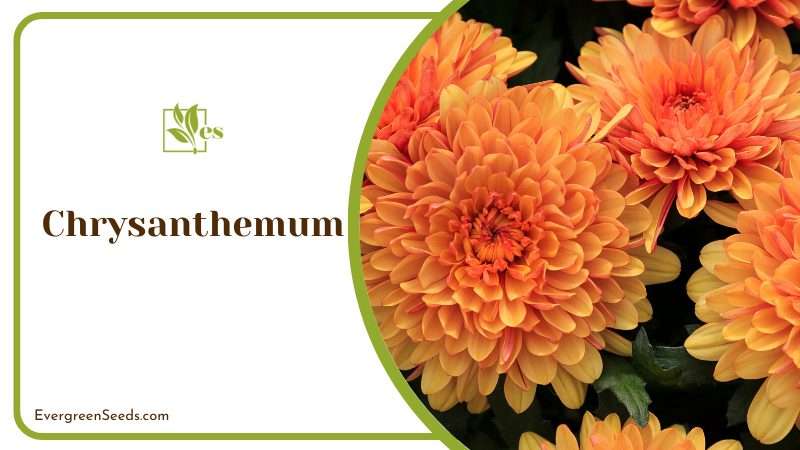
The flowers are gold, white, off-white, yellow, pink, and burgundy, have a flat top and are 4 to 6 inches wide. Its leaves are ovate, small, and thin and grow alternatively with toothed edges.
– Benefits
The plant has various health benefits. It relieves chest pain, lowers high blood pressure, manages diabetes, reduces headaches and dizziness, etc.
– Uses
The plants are used as summertime tea in southern China. They are one of the most effective outdoor plants to keep rodents away. Their blooms contain a unique compound that acts for rats in the same way as it does for insects.
– Distinguishing Characteristics
The plant tolerates partial shade, but it blooms best in full sun. The flowers bloom the best when the plant is grown somewhere that experiences shorter days and long nights. So, it is wise to not plant it close to night lights or street lights as artificial lights disrupt their cycle. The mums prefer fertile, well-draining soil containing a lot of organic matter and compost. A slightly acidic soil is ideal.
Water the soil to keep it evenly moist. If the top 1 inch of the soil feels dry water it till it feels damp. When growing the plant in a pot, water it with a watering can till all the water drains from the pot. Be sure to keep the soil moist and not soggy as conditions like root rot and fungal diseases may arise.
It grows well with the use of nitrogen and potassium-rich fertilizer in the growing season. Do not add fertilizer until the frost has passed. Fertilizing mature plants should be avoided after July so that any new growth is not injured because of the frost.
– Propagation
The mums are propagated through division, seeds, and cuttings, and the fastest of them is through division. Divide the plants that have grown for almost two years as any plants younger do not have a well-established root system.
Divide the plants that are at least 6 inches tall and do so in spring. Replant at a distance of at least 18 inches to avoid root damage.
5. Lavender
The plants are perennials that belong to the Lamiaceae family and are native to Europe. The best time to grow it is spring after all the threats of frost have passed and the soil has warmed up a little bit.
It grows at a moderate pace and grows a few inches each year. The plant is 2 to 3 feet tall and 2 to 4 feet wide.
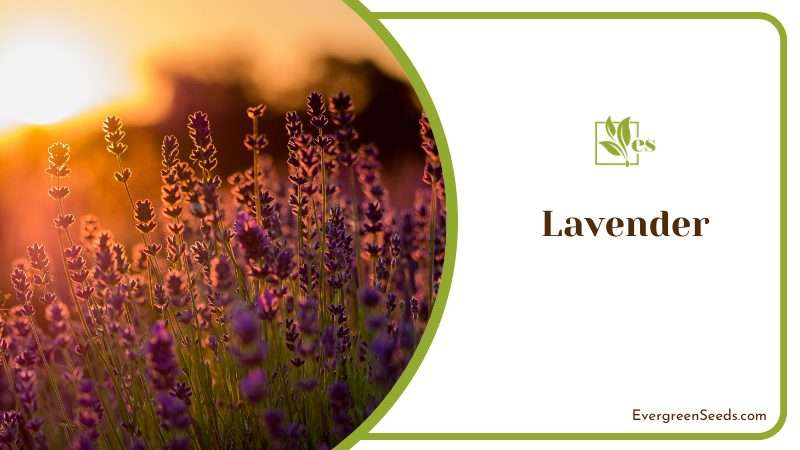
Its flowers are 4 to 6 inches in diameter and are a common part of flower arrangements. The blooms are smooth purple globes. Its leaves are small, thin, and ovate and are less than an inch in length. They grow alternately and have tooth-like edges.
– Benefits
The plant is quite popular for its soothing properties. It reduces blood pressure and heart rate and helps fight fungal growth. Furthermore, it has the potential to relieve the symptoms of asthma.
– Uses
The plant’s oil contains some concentrated compounds that deter mice. Place it near the plants that attract rats and let it do the rest of the job.
– Distinguishing Characteristics
The plant produces lots of flowers and bushes when it is grown in full sun. It does not tolerate partial shade. Make sure that the plant receives sunlight for at least six hours a day and eight to ten hours in the growing season.
Lean soil promotes oil production more as compared to soils rich in organic matter, so keep a light hand on fertilizers. The plant prefers well-drained soil that is more on the drier side so add sand to your soil if you are using a regular potting mix. The soil’s pH plays a huge part in the plant’s health and fragrance.
It tolerates drought once it is mature but until then it is essential that you water them, especially during its first growing season. When the plant has established, you do not need to water them at all in fact too much-watering leaves the plant with root rot and fungal diseases.
Moreover, the plant does not have extensive fertilizer requirements. Simply add a handful of compost when you first plant it.
– Propagation
The best way to propagate it is through cuttings. Cut a 3-inch shoot, using a sterile pair of scissors, below the leaf node and remove all the leaves from the bottom 2 inches of your cutting. Place your cutting in a small pot containing seed-starting mix after dipping it into a rooting hormone.
Cover your pot with a plastic bag or something similar and place it in a warm spot. The roots develop after two weeks after which you can transplant your cutting into a larger pot.
Final note:
The red gum plant is one of the most effective shade plants that repel rats. It has a fast growth rate and attracts pollinators like butterflies and bees.
References
- Susan Mahr. Rosemary, Rosemarinus officinalis. University of Wisconsin – Madison.
Retrieved from https://hort.extension.wisc.edu/articles/rosemary-rosemarinus-officinalis/ - (October 2020). Peppermint Oil. NCCIH.
Retrieved from https://www.nccih.nih.gov/health/peppermint-oil - Nate Dalman. Marigolds. University of Minnesota Extension.
Retrieved from https://extension.umn.edu/flowers/marigolds


